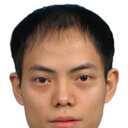Inhibition of pyruvate carboxylase by 1α,25-dihydroxyvitamin D promotes oxidative stress in early breast cancer progression.
Kľúčové slová
Abstrakt
Maintaining reductive-oxidative (redox) balance is an essential feature in breast cancer cell survival, with cellular metabolism playing an integral role in maintaining redox balance through its supply of reduced NADPH. In the present studies, the effect of 1,25-dihydroxyvitamin D (1,25(OH)2D) on redox balance was investigated in early stages of breast cancer. Treatment with 1,25(OH)2D promoted oxidative stress in MCF10A-ras and MCF10A-ErbB2 breast epithelial cells, as measured by the decreased ratios of NADPH/NADP+ and reduced to oxidized glutathione (GSH/GSSG). The mRNA and protein expression of the enzyme pyruvate carboxylase (PC) was downregulated with 1,25(OH)2D treatment, suggesting a potential mechanism. Genetic depletion of PC in MCF10A-ras cells resulted in a decreased ratio of NADPH/NADP+ and GSH/GSSG, with 1,25(OH)2D treatment having no further effect. Mutation analysis confirmed the presence and functionality of a vitamin D response element in the PC gene promoter region. Collectively, these results provide evidence that 1,25(OH)2D promotes oxidative stress in early breast cancer progression through transcriptional downregulation of PC.


